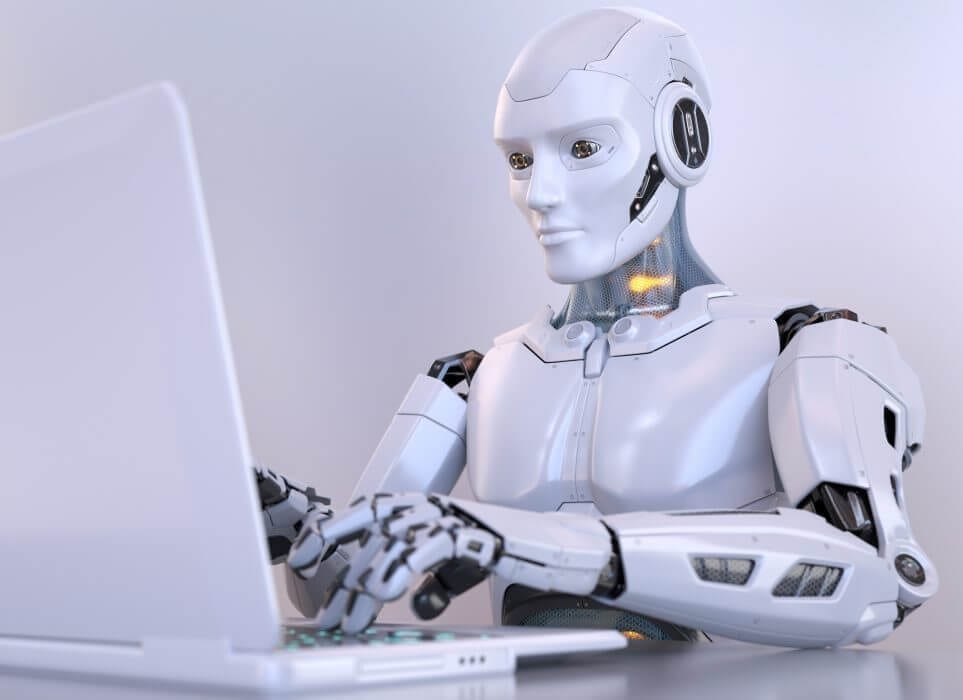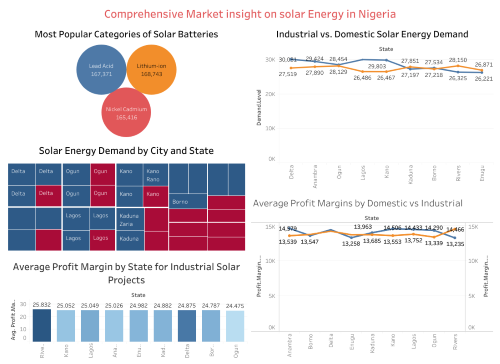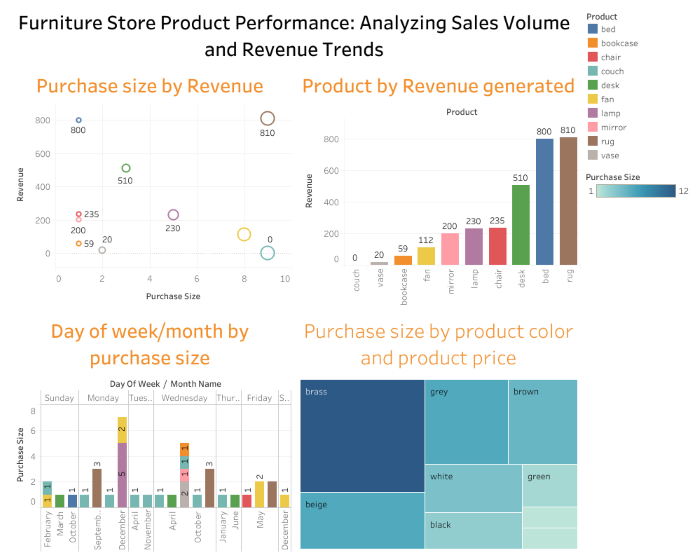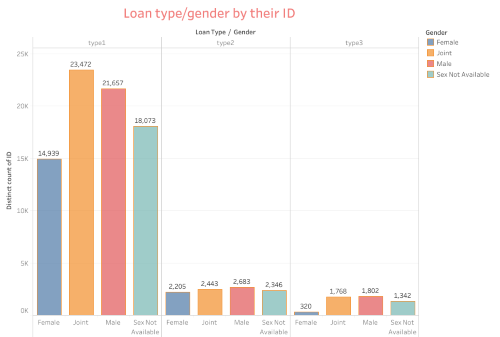Unveiling the Top Essential Questions & Answers in AI

Delving into the depths of AI is akin to embarking on a journey where each question unearthed reveals a new layer of understanding. In this blog post, we embark on precisely such a journey, as we ask: what are the top essential questions & answers in AI? AI transcends mere technological advancement; it embodies the essence of human ingenuity and the relentless pursuit of knowledge.
As we unravel the enigmatic facets of AI, we invite you to partake in a dialogue that transcends conventional boundaries, igniting curiosity and nurturing a thirst for discovery.
What defines AI’s essence? How do machine learning algorithms decipher complex patterns? What role do neural networks play in AI’s evolution? These are just glimpses into the labyrinth of questions awaiting illumination. As we navigate through the maze of AI inquiries, we uncover insights that redefine our perceptions and broaden our horizons.
Join us in this exhilarating expedition as we embark on a quest to demystify the enigmatic realm of AI, one question at a time. Let curiosity be your guide as we embark on an odyssey of discovery, unraveling the mysteries and unveiling the truths that lie at the heart of AI’s essence.
Embark on a journey into the realm of Artificial Intelligence (AI), a domain where machines mimic human cognitive functions, revolutionizing the way we live, work, and interact with technology.
What is the Brief Evolution of AI?
The journey of artificial intelligence began in the 1950s with the groundbreaking work of Alan Turing, who proposed the Turing test to determine whether machines can imitate human intelligence.
In the 1960s, with LISP, the first artificial intelligence programming language developed by John McCarthy, artificial intelligence research gained momentum. Early artificial intelligence systems focused on symbolic reasoning and rule-based systems, which led to the development of expert systems in the 1970s and 1980s.
In the 1990s, driven by the improvement of the availability of digital data and the advancement of computing power, people’s attention turned to machine learning and data-driven methods.
The rise of neural networks and the development of support vector machines during this period enabled artificial intelligence systems to learn from data, thereby obtaining better performance and adaptability.
At the beginning of the 21st century, artificial intelligence research expanded to new fields, including natural language processing, computer vision, and robotics, paving the way for today’s artificial intelligence revolution.
GPT: Game Changer
The recent explosion of AI is largely due to the development of deep learning technology and the emergence of large-scale neural networks, such as OpenAI’s Generative Pre-trained Transformer (GPT) series.
The GPT-3 released in 2020 is a major example of the development of artificial intelligence, with 175 billion parameters, demonstrating unprecedented natural language understanding and generation capabilities.
The success of GPT-3 and its predecessor proves the potential of artificial intelligence and stimulates further research and development in this field. The latest iteration, GPT-4, builds on its predecessors and demonstrates more advanced capabilities to further push the boundaries of artificial intelligence.
Milestones and Breakthroughs
Key milestones in AI history include the creation of the first neural network model in the 1950s, the development of expert systems in the 1970s, and the rise of deep learning in the 21st century.
Key Figures and Innovations
Pioneers such as Alan Turing, John McCarthy, and Marvin Minsky have shaped the field of AI with groundbreaking research, theories, and inventions.
Why Understanding AI Matters in Today’s World?
In today’s rapidly advancing technological landscape, AI is not merely a buzzword but a transformative force shaping industries, economies, and societies worldwide. Understanding AI is pivotal for navigating this digital era and harnessing its potential for innovation and progress.
What is Artificial Intelligence?
Artificial Intelligence, or AI, refers to the simulation of human intelligence processes by machines, encompassing tasks such as learning, reasoning, problem-solving, perception, and language understanding.
Defining AI: From Machine Learning to Neural Networks
At the heart of AI lies machine learning, a subset of AI that enables machines to learn from data without explicit programming. Neural networks, inspired by the structure of the human brain, are a fundamental component of machine learning algorithms.
What are the Types of AI
AI can be classified into Narrow AI, designed for specific tasks like speech recognition or image classification, and General AI, which possesses human-like intelligence and can perform any intellectual task a human can.
As researchers try to build more advanced forms of artificial intelligence, they must also begin to develop a more nuanced understanding of the precise meaning of intelligence and even consciousness. In trying to clarify these concepts, the researchers outlined four types of artificial intelligence.
According to Professor Arend Hintze of the University of Michigan, the following is a summary of each AI type
Reaction machine
Reactive machines are the most basic type of artificial intelligence. The machine constructed in this way does not have any knowledge of previous events, but only “reacts” to events at a given moment. Therefore, they can only perform certain advanced tasks within a very narrow range, such as playing chess, and cannot perform tasks outside of their limited context.
Machine with limited memory
Machines with limited memory have a limited understanding of past events. They can interact more with the world around them than reactive machines. For example, self-driving cars use the form of limited memory to turn, observe approaching vehicles, and adjust their speed. However, machines with only limited memory cannot form a complete understanding of the world because their memories of past events are limited and are only used in a narrow time band.
Mind machine Theory
Machines with a “theory of mind” represent an early form of artificial intelligence. In addition to being able to create a representation of the world, this type of machine can also understand other entities that exist in the world. As of now, this reality has not yet been realized.
Self-aware machine
Self-aware machines are the most advanced type of artificial intelligence in theory and can understand the world, others, and themselves. This is what most people mean when they talk about implementing AGI. Currently, this is a distant reality.
How Does AI Work?
AI algorithms process data to recognize patterns, make predictions, and derive insights. These algorithms include supervised learning, unsupervised learning, and reinforcement learning, among others.
The Role of Data in AI Training
Data is the lifeblood of AI, serving as fuel for training algorithms. High-quality, diverse data sets are essential for AI systems to learn and generalize effectively.
What Can AI Do?
Applications of AI across Industries
AI finds applications across diverse industries, including healthcare, finance, transportation, manufacturing, and entertainment, revolutionizing processes and driving innovation.
So far, most of us are aware that artificial intelligence (AI) is increasingly becoming a part of our daily lives. However, many of us will be surprised to learn that AI already knows how to do some skills. Here are 13 exciting skills that artificial intelligence can already do today.
Read!
Is one of your wishes to save time by paying attention to only the main points of communication? Your wish has come true. Summary of artificial intelligence.
Whether it is news articles, Web links, books, emails, legal documents, audio and image files, etc., automatic text summaries of artificial intelligence and machine learning will read communications and report basic information.
Currently, SummarizeBot can be used for Facebook Messenger or Slack and relies on natural language processing, machine learning, artificial intelligence, and Blockchain technology.
Write
Would you believe that together with professional reporters, news organizations such as the New York Times, the Washington Post, and Reuters rely more on artificial intelligence to write?
They do, and although this does include many “who, what, where, when and how” formulaic works, artificial intelligence can also be extended to more creative writing. Many marketers are turning to artificial intelligence to make their social media posts. Even a novel is produced by artificial intelligence, which is a shortlist for an award.
See
Machine vision is when a computer can “see” the world, analyze visual data and make decisions. Nowadays, there are many amazing ways to use machine vision, including enabling self-driving cars, facial recognition for police work, payment portals, and more. In manufacturing, the ability of machines to see contributes to predictive maintenance and product quality control.
Hear and understand
Did you know that artificial intelligence can detect gunshots, analyze the sound, and then alert relevant agencies? This is one of the exciting things AI can do when hearing and understanding sounds.
Who can ask for the help of a digital voice assistant to respond to your inquiry, whether you want a weather forecast or your day’s agenda? Business professionals like the convenience, efficiency, and accuracy provided by artificial intelligence through automatic meeting minutes.
.
Speak
Artificial intelligence can also speak. Although it is helpful (and fun) to have Alexa and Google Maps reply to your inquiries and provide you with directions, Google Duplex goes one step further and uses AI to schedule appointments and complete tasks over the phone in a very conversational language. It can also accurately respond to the reactions of the humans it talks to.
Smell
Currently, artificial intelligence researchers are developing AI models that can detect diseases—just by smelling human breathing. It can detect chemicals called aldehydes associated with human diseases and stress (including cancer, diabetes, and brain injury), and even detect the “woody, musky smell” emitted by Parkinson’s disease before any other symptoms are determined.
Artificial intelligence robots can also identify gas leaks or other corrosive chemicals. IBM is even using AI to develop new perfumes.
Touch
Using sensors and cameras, there is a robot that can identify “ripe” raspberries in the supermarket, and even pick them up and put them in the basket! Its creators say that it will eventually be able to pick a raspberry every 10 seconds for 20 hours a day! The next step in the development of artificial intelligence tactile touch is to connect tactile touch with other senses.
Move
Artificial intelligence has promoted various movements from self-driving cars to drones to robots. In the Alter3 production of the New National Theater in Tokyo, the robot can automatically generate movement.
Understand emotions
Market research is helped by artificial intelligence tools that can track a person’s emotions when watching a video. Artificial intelligence can collect data from a person’s facial expressions, body language, etc., analyze it based on an emotional database to determine the emotions that may be expressed, and then determine actions based on this information.
Play games
This is not all serious business with artificial intelligence can learn to play games such as chess, Go, and poker (this is an incredible feat)! Moreover, it turns out that AI can learn to play these games compete, and even defeat humans!
Debate
IBM’s Project Debater shows us that artificial intelligence can even successfully debate humans on complex topics. It can not only study a topic, but also create an attractive point of view and craft to refute human opponents.
Create
Artificial intelligence can even master the creative process, including making visual art, writing poems, composing music, and taking pictures. Google’s AI can even create its own AI “children”-which is better than its human-made counterparts.
Read your heart
This is truly incredible AI that can read your thoughts! It can interpret brain signals and then create speech. For those with language barriers, it is impressive and life-changing, but when you consider the mind-reading aspects of this skill, it can be a bit disturbing.
Not surprisingly, some of the largest technology giants, including Facebook and Elon Musk, have their own projects in progress to take advantage of the mind-reading potential of artificial intelligence.
Now imagine if these 13 exciting skills were all combined into a super artificial intelligence! Scary or exciting? It depends on your decision, but I think we all agree that it will be exciting!
What is the Current State of AI?
Artificial intelligence (AI) has become a technological reality for cross-industry companies and organizations. Even though its benefits may not always be easy to quantify, AI has proven itself to improve process efficiency, reduce human error and labor, and extract insights from big data.
According to the latest Artificial Intelligence Index report, in 2019, the adoption rate of artificial intelligence by large companies increased by 47% compared to 2018. Artificial intelligence has entered many enterprise applications, including customer relationship management software, recruitment services, labor productivity, and resource planning tools.
According to the same report, global private investment in artificial intelligence exceeded US770 billion last year, highlighting interest in artificial intelligence software and startups.
At the same time, artificial intelligence and related disciplines have attracted more college students from all over the world, and have made artificial intelligence experts the most popular professionals in developed countries.
On a smaller scale, artificial intelligence has entered the lives of many people in one form or another, even if its existence is not always recognized. In order to better understand the current situation of artificial intelligence, let us take a closer look at the role of artificial intelligence in business and the lives of many people.
What are the Summary of the Status of AI?
Artificial intelligence enhancement technologies and solutions are now more widely available in various industries than before, although they may not be cheap to implement.
In industries such as IT, automotive, and retail, voice-based assistants are at the forefront of the adoption of artificial intelligence.
The small-scale AI visible in chatbots enables smaller brands to save resources and increase customer satisfaction.
More and more artificial intelligence enhancement tools are provided in the form of software as a service (SaaS).
Mobile devices and applications have become one of the easiest ways to deploy artificial intelligence technology across industries, whether it is voice assistants, intelligent monitoring and control, personalized shopping experiences, or warehouse management applications.
Artificial intelligence exists in intelligent applications, neural networks, artificial intelligence platforms as services, and artificial intelligence cloud services.
Emerging AI technologies include enhanced intelligence, which aims to enhance human intelligence, and edge AI, in which AI algorithms are processed locally without the need for an Internet connection (such as some forms of face recognition).
According to the Artificial Intelligence Index report, AI computing power keeps doubling every 3.4 months.
What are AI implementation examples?
Intelligent machines that can replicate human behavior may not be widely used yet, but subsets of artificial intelligence such as machine learning (ML) and deep learning (DL) have found wide applications in enterprises and daily environments. Here are some of the most famous AI implementations.
Automatic customer support for online stores
In most cases, this translates into artificial intelligence assistants that can immediately answer basic questions, find products or communicate order status.
Personalized shopping experience, including recommendations
Big brands use AI to process a lot of data about their customers to provide product recommendations, custom content, etc.
Forecasts and forecasts of financial services
Powerful financial analysis tools use machine learning to analyze more data faster and provide accurate forecasts.
AI curation and suggestion
AI plays a role in the content you see in your feeds on networks such as Facebook. AI curation will consider your social media preferences and habits, as well as other dynamic data.
Face detection and security system
Artificial intelligence has been implemented in advanced security and surveillance systems to prevent threats and identify suspects.
Anti-virus threat detection
In addition to using other detection methods, antivirus software from top providers uses AI to identify new threats and include them before they become a problem.
More effective warehouse management system
Artificial intelligence can help warehouse employees find products faster by optimizing routes and picking processes.
Safety improvements in the automotive industry
Artificial intelligence gives cars the ability to predict safety and allows autonomous driving modes. In 2019, the application of artificial intelligence in the automotive industry is greater than before, the most significant is Tesla Motors.
Internet of Things
Smart appliances such as temperature sensors use AI to better understand your behavior and react to your actions and commands. In addition, smart homes are now being controlled by increasingly intelligent smart voice assistants.
What are Trends and Developments in AI Technology?
Current trends in AI include advances in deep learning, natural language processing, computer vision, and reinforcement learning, fueled by exponential growth in computational power and data availability.
What are the Challenges and Opportunities Ahead of AI?
Opportunities
The current expansion of artificial intelligence is the result of advances in the field of machine learning. Machine learning involves the use of algorithms that allow computers to learn by looking at data and performing tasks based on examples, rather than relying on explicit human programming.
A machine learning technique called deep learning, inspired by biological neural networks, can find and remember patterns in large amounts of data. Deep learning systems perform tasks by considering examples, usually without programming, and are superior to traditional machine learning algorithms.
Big data refers to super-large data sets that can reveal patterns, trends, and associations through computational analysis, as well as the power of artificial intelligence and high-performance computing, which are generating new forms of information and insight, which are of great value to meet the biggest challenges of mankind.
The following are just a few examples that show how artificial intelligence can be applied to good:
*Agricultural productivity can be improved by digitizing and analyzing images from automatic drones and satellites.
*Improving the collection, processing and dissemination of health data and information can strengthen the diagnosis and treatment of patients, especially for people living in rural and remote areas. Better data on climate and environmental conditions can also help governments better predict the occurrence of malaria, control the spread of the disease, and deploy medical resources more effectively.
*Artificial intelligence can be used to assess students’ learning ability and help them develop confidence in mastering subjects.
*Artificial intelligence can help people with disabilities or special needs in many ways. Artificial intelligence is getting better in text-to-speech translation and speech-to-text translation, which can help visually impaired or hearing impaired people use information and communication technologies (ICTs).
*Artificial intelligence is already helping to create smart and sustainable cities.
*Climate change data analysis and climate modeling infused with artificial intelligence predict climate-related challenges and disasters.
*Pattern recognition can track the migration of marine life, the concentration of seabed life, and fishing activities to strengthen sustainable marine ecosystems and combat illegal fishing.
Challenges
Although the opportunities for artificial intelligence are great, there are also risks.
Data sets and algorithms can reflect or reinforce gender, racial, or ideological biases. When the data sets on which AI relies (fed by humans) are incomplete or biased, they may lead to biased AI conclusions.
Humans are increasingly using deep learning technology to decide who gets a loan or a job. However, the way deep learning algorithms work is opaque and cannot provide humans with information about why artificial intelligence draws certain associations or conclusions, when failures may occur, and when and how.
Artificial intelligence can deepen inequality by automating daily tasks and replacing work.
Software, including software that runs mobile phones, security cameras, and power grids, may have security vulnerabilities. These can lead to money and identity theft, or Internet and power failures.
The advancement of artificial intelligence technology will also bring new threats to international peace and security. For example, machine learning can be used to generate fake videos and audio to influence voting, decision-making, and governance.
Solution: Ensure that artificial intelligence is always used
The formulation and adoption of relevant international standards and the availability of open-source software will provide a common language and tools for coordination, which will promote the participation of many independent parties in the development of artificial intelligence applications. This helps to bring the benefits of artificial intelligence progress to the entire world while mitigating its negative effects.
In fact, it is essential that different stakeholders guide the design, development, and application of artificial intelligence systems. Accurate and representative AI conclusions require accurate and representative data sets. In addition, safeguards need to be developed to promote the legal, ethical, private, and safe use of artificial intelligence and big data.
Improving the transparency of artificial intelligence, the purpose is to providing information for legal or medical decision-making, will enable humans to understand why artificial intelligence draws certain associations or conclusions. In turn, this will encourage people to use their expertise, experience, and intuition to verify conclusions or make decisions that are different from those made by machines. Although the speed and accuracy of machine analysis and conclusion are much higher than before, humans still have the right to question the machine’s conclusions and make the final decision.
In order to balance the impact of artificial intelligence on employment and benefit from the new employment opportunities provided by artificial intelligence, it is essential to create an environment conducive to the acquisition of digital skills, whether through formal education or training in the workplace. In particular, artificial intelligence will bring employment opportunities to those who have the advanced digital skills needed to create, manage, test, and analyze information and communication technologies.
Efforts need to be made to protect the security, privacy, identity, money and property of end users to meet the security challenges related to artificial intelligence in the fields of e-finance, e-governance, smart and sustainable cities, and connected cars.
Are there Bias and Discrimination in AI Systems?
AI systems can exhibit biases inherent in training data, leading to discriminatory outcomes. Mitigating bias requires techniques such as data preprocessing, algorithmic transparency, and diversity in AI teams.
What Impact of AI on Employment and the Workforce?
AI’s impact on employment is multifaceted, with automation leading to job displacement in some sectors while creating new opportunities in others. Reskilling and lifelong learning are essential for adapting to the changing job market.
AI and Privacy: Balancing Innovation with Data Protection
The proliferation of AI raises concerns about data privacy and security. Safeguarding privacy requires robust data protection measures, informed consent, and transparent data practices.
What are Common Misconceptions about AI?
Myth vs. Reality: Debunking AI Misconceptions
Contrary to popular belief, AI is not synonymous with sentient robots or malevolent superintelligences. Dispelling misconceptions is essential for fostering informed discourse and understanding AI’s capabilities and limitations.
AI Will Take Over the World: Separating Fact from Fiction
While AI presents challenges, fears of a dystopian future dominated by rogue AI are unfounded. Responsible AI development prioritizes human values, safety, and control.
AI is Infallible: Understanding AI Limitations
AI systems are not infallible and can exhibit errors, biases, and limitations. Understanding these limitations is essential for managing expectations and mitigating risks in AI applications.
AI and Creativity: Exploring the Boundaries
While AI can generate creative outputs such as art, music, and literature, the nature of creativity remains elusive. AI’s ability to innovate is limited by its reliance on existing data and algorithms.
Can AI Be Truly Creative?
Debates persist over whether AI can exhibit genuine creativity or merely mimic human creativity. Exploring the boundaries of AI creativity sheds light on the nature of human intelligence and artistic expression.
The Human Element in AI Innovation
Human creativity, intuition, and empathy are irreplaceable in AI innovation. Collaborations between humans and machines drive breakthroughs, ensuring AI serves humanity’s best interests.
What are the Practical Applications of AI?
AI in Healthcare
AI algorithms analyze medical images to assist in diagnosing diseases such as cancer, identifying abnormalities with speed and accuracy surpassing human capabilities.
Personalized Medicine: AI in Healthcare Analytics
AI-driven healthcare analytics harness patient data to personalize treatment plans, predict disease outcomes, and optimize healthcare delivery, improving patient outcomes and reducing costs.
Is AI in Finance real?
Algorithmic Trading: Enhancing Financial Decision Making
AI-powered algorithms analyze financial data to inform investment decisions, predict market trends, and execute trades with speed and precision, revolutionizing financial markets.
Fraud Detection and Prevention: Leveraging AI in Banking
AI systems detect suspicious patterns and anomalies in financial transactions, enabling banks to combat fraud, protect customer assets, and safeguard the integrity of the financial system.
What is AI in Transportation like?
Autonomous Vehicles: The Future of Mobility
AI enables self-driving cars to perceive their environment, make decisions, and navigate autonomously, promising safer, more efficient transportation and transforming urban mobility.
Traffic Management: Optimizing Urban Transportation Systems
AI-powered traffic management systems alleviate congestion, reduce emissions, and enhance traffic flow through real-time monitoring, predictive analytics, and adaptive control strategies.
What is the Future of AI?
Quantum Computing: Revolutionizing AI Capabilities
Quantum computing holds the potential to exponentially increase AI’s processing power, enabling breakthroughs in optimization, cryptography, and machine learning.
Neuromorphic Computing: Mimicking the Human Brain
Neuromorphic computing architectures emulate the structure and function of the human brain, offering energy-efficient, brain-inspired computing for AI applications.
Are AI and Robotics in Synergies and Innovative?
Human-Robot Collaboration in Industry
Collaborative robots, or cobots, work alongside humans in manufacturing, healthcare, and other industries, enhancing productivity, safety, and flexibility in workplaces.
Ethical Considerations in AI-Driven Robotics
Ethical considerations in AI-driven robotics encompass safety, accountability, and the impact on human society. Ethical AI principles guide the responsible development and deployment of robotic systems.
What are the challenges and Opportunities Ahead of AI?
Overcoming AI Challenges
Addressing Data Privacy and Security Concerns
Protecting data privacy and security is paramount in AI development, requiring robust encryption, access controls, and secure data handling practices.
Ensuring AI Transparency and Accountability
Transparent AI systems provide insight into decision-making processes, enabling users to understand, interpret, and trust AI-driven outcomes.
Seizing AI Opportunities
Investing in AI Talent and Education
Developing AI talent through education, training, and workforce development programs is essential for nurturing innovation and driving economic growth.
Promoting Ethical AI Innovation
Ethical AI innovation prioritizes human values, fairness, and social responsibility, ensuring AI benefits society while minimizing risks and harms.
Conclusion
As AI continues to evolve, its potential to transform industries, empower individuals, and address global challenges is boundless. Embracing responsible AI development is key to harnessing its power for the collective good.
By prioritizing ethics, transparency, and human-centric design, we can shape a future where AI serves as a catalyst for positive change, enriching lives and advancing the well-being of society as a whole.









